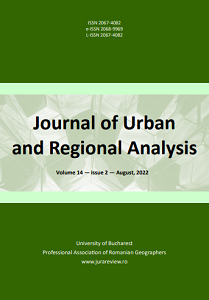DISTRIBUTION OF HOME-BASED WORK IN CITIES: IMPLICATIONS FOR PLANNING AND POLICY IN THE PANDEMIC ERA
DISTRIBUTION OF HOME-BASED WORK IN CITIES: IMPLICATIONS FOR PLANNING AND POLICY IN THE PANDEMIC ERA
Author(s): Matthew Zenkteler, Greg Hearn, Marcus Foth, Marion McCutcheonSubject(s): Health and medicine and law, Policy, planning, forecast and speculation, Rural and urban sociology, Socio-Economic Research
Published by: Editura Universitară
Keywords: home-based work; urban inequalities; walkable neighbourhoods; COVID-19; New Urbanism;
Summary/Abstract: The rapid growth of home-based work raises questions about its long-term impacts on neighbourhoods and cities. By removing the need to commute, home-based work has the potential to advance the New Urbanism aspirations of walkable neighbourhoods in an urban village format where people live, work and play. Nonetheless, the uneven distribution of this emerging work practice, strongly associated with the socio-economic status of neighbourhoods, is exacerbating the risk of increased urban inequalities. This paper presents pre- and post-COVID data for the City of Gold Coast, Australia, and it discusses the urban distribution of home-based work by analysing the home-based workers’ locational preferences, their daily movement patterns, the preferred built environment outcomes, and the urban design features. The findings suggest that certain social and economic interactions tend to increase with the growth of remote work. These interactions, magnified by the COVID pandemic, offer opportunities to advance the New Urbanism aspirations of cohesive, walkable communities and neighbourhoods.
Journal: Journal of Urban and Regional Analysis
- Issue Year: 14/2022
- Issue No: 2
- Page Range: 187-210
- Page Count: 24
- Language: English

